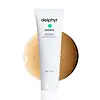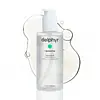What's inside
What's inside
 Key Ingredients
Key Ingredients

 Benefits
Benefits

 Concerns
Concerns

 Ingredients Side-by-side
Ingredients Side-by-side

Water
Skin ConditioningDisodium Cocoyl Glutamate
CleansingCellulose
AbsorbentGlycerin
HumectantAcrylates Copolymer
1,2-Hexanediol
Skin ConditioningSodium Cocoyl Glutamate
CleansingTromethamine
BufferingLauryl Hydroxysultaine
CleansingCitric Acid
BufferingCoco-Glucoside
CleansingEthylhexylglycerin
Skin ConditioningDecyl Glucoside
CleansingButylene Glycol
HumectantSodium Chloride
MaskingCoffea Arabica Seed Powder
AbrasivePolyquaternium-7
Trisodium Ethylenediamine Disuccinate
Dipropylene Glycol
HumectantHydrogenated Lecithin
EmulsifyingSodium Benzoate
MaskingPolyglyceryl-10 Oleate
Skin ConditioningAsiaticoside
AntioxidantMadecassic Acid
Skin ConditioningAsiatic Acid
Skin ConditioningCaffeine
Skin ConditioningGluconolactone
Skin ConditioningWater, Disodium Cocoyl Glutamate, Cellulose, Glycerin, Acrylates Copolymer, 1,2-Hexanediol, Sodium Cocoyl Glutamate, Tromethamine, Lauryl Hydroxysultaine, Citric Acid, Coco-Glucoside, Ethylhexylglycerin, Decyl Glucoside, Butylene Glycol, Sodium Chloride, Coffea Arabica Seed Powder, Polyquaternium-7, Trisodium Ethylenediamine Disuccinate, Dipropylene Glycol, Hydrogenated Lecithin, Sodium Benzoate, Polyglyceryl-10 Oleate, Asiaticoside, Madecassic Acid, Asiatic Acid, Caffeine, Gluconolactone
Ethylhexyl Palmitate
EmollientSorbeth-30 Tetraoleate
EmulsifyingTriethylhexanoin
MaskingCetyl Ethylhexanoate
EmollientDiisostearyl Malate
EmollientCaprylic/Capric Triglyceride
MaskingSorbitan Sesquioleate
EmulsifyingCaprylyl Glycol
EmollientEthylhexylglycerin
Skin ConditioningWater
Skin ConditioningDipropylene Glycol
HumectantGlycerin
HumectantHydrogenated Lecithin
EmulsifyingPolyglyceryl-10 Oleate
Skin ConditioningAsiaticoside
AntioxidantMadecassic Acid
Skin ConditioningAsiatic Acid
Skin ConditioningEthylhexyl Palmitate, Sorbeth-30 Tetraoleate, Triethylhexanoin, Cetyl Ethylhexanoate, Diisostearyl Malate, Caprylic/Capric Triglyceride, Sorbitan Sesquioleate, Caprylyl Glycol, Ethylhexylglycerin, Water, Dipropylene Glycol, Glycerin, Hydrogenated Lecithin, Polyglyceryl-10 Oleate, Asiaticoside, Madecassic Acid, Asiatic Acid
Ingredients Explained
These ingredients are found in both products.
Ingredients higher up in an ingredient list are typically present in a larger amount.
Asiatic Acid is a major component of Centella Asiatica Extract. It has wound-healing, anti-inflammatory, and antioxidant properties.
Studies show Asiatic Acid is able to block the pathway for skin inflammation receptors, helping to soothe skin.
As an antioxidant, asiatic acid helps protect our skin against damaging environmental factors.
Learn more about Asiatic AcidAsiaticoside comes from the super popular skin-soothing ingredient, Centella asiatica. It is one of four active compounds found in the extract of Centella Asiatica.
Asiaticoside is an antioxidant and helps with wound healing. It has been shown to increase antioxidant activity during the wound healing process.
Dipropylene Glycol is a synthetically created humectant, stabilizer, and solvent.
This ingredient helps:
Dipropylene glycol is technically an alcohol, but it belongs to the glycol family (often considered part of the ‘good’ alcohols). This means it is hydrating and gentle on skin unlike drying solvent alcohols like denatured alcohol.
As a masking agent, Dipropylene Glycol can be used to cover the smell of other ingredients. However, it does not have a scent.
Studies show Dipropylene Glycol is considered safe to use in skincare.
Learn more about Dipropylene GlycolEthylhexylglycerin (we can't pronounce this either) is commonly used as a preservative and skin softener. It is derived from glyceryl.
You might see Ethylhexylglycerin often paired with other preservatives such as phenoxyethanol. Ethylhexylglycerin has been found to increase the effectiveness of these other preservatives.
Glycerin is already naturally found in your skin. It helps moisturize and protect your skin.
A study from 2016 found glycerin to be more effective as a humectant than AHAs and hyaluronic acid.
As a humectant, it helps the skin stay hydrated by pulling moisture to your skin. The low molecular weight of glycerin allows it to pull moisture into the deeper layers of your skin.
Hydrated skin improves your skin barrier; Your skin barrier helps protect against irritants and bacteria.
Glycerin has also been found to have antimicrobial and antiviral properties. Due to these properties, glycerin is often used in wound and burn treatments.
In cosmetics, glycerin is usually derived from plants such as soybean or palm. However, it can also be sourced from animals, such as tallow or animal fat.
This ingredient is organic, colorless, odorless, and non-toxic.
Glycerin is the name for this ingredient in American English. British English uses Glycerol/Glycerine.
Learn more about GlycerinHydrogenated Lecithin is created from the hydrogenation of lecithin (a group of phospholipids). Hydrogenation is a chemical reaction between hydrogen and another element.
This ingredient is an emollient and emulsifier. As an emollient, it helps soften skin by trapping moisture within. As an emulsifier, it prevents oil and water ingredients from separating.
Madecassic Acid is a major component of Centella Asiatica Extract. It has anti-inflammatory and antioxidant properties.
It is a triterpenoid, meaning it naturally acts as an antioxidant. Antioxidants protect your skin against damage from environmental factors such as pollution and UV.
Studies show Madecassic Acid helps soothe the skin due to its ability to block inflammation pathways.
Learn more about Madecassic AcidPolyglyceryl-10 Oleate isn't fungal acne safe.
Water. It's the most common cosmetic ingredient of all. You'll usually see it at the top of ingredient lists, meaning that it makes up the largest part of the product.
So why is it so popular? Water most often acts as a solvent - this means that it helps dissolve other ingredients into the formulation.
You'll also recognize water as that liquid we all need to stay alive. If you see this, drink a glass of water. Stay hydrated!
Learn more about Water